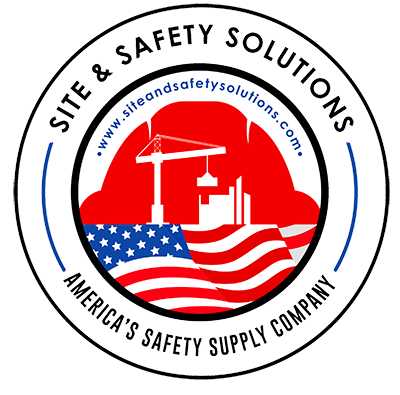
Introduction
Ensuring safety in construction sites is paramount. The meticulous use of inspection tags is a fundamental practice for upholding safety standards within this domain. This guide will delve into the significance, types, and optimal use of inspection tags in construction environments, catering specifically to the needs and concerns of diligent construction workers.
Understanding Inspection Tags
Importance of Inspection Tags in Construction
Construction sites thrive on precision and safety protocols. As pivotal indicators, inspection tags are crucial in communicating crucial information related to equipment status, maintenance schedules, and compliance adherence.
Types of Inspection Tags
- Brady® Lockout Tags
- Brady® Inspection Record Tags
- Brady® Standard Scaffold Status Tags
- Metal 4-Year Inspection Tag
- Honeywell Styrene Lockout “Do Not Open Tags”
Each type holds unique functionalities tailored to address distinct safety concerns within the construction landscape.
Durability in Construction Environments
Construction sites are notorious for their challenging conditions—exposure to extreme temperatures, abrasive surfaces, corrosive substances, and rigorous equipment handling. The Metal 4-Year Inspection Tags are specifically engineered to endure these harsh environments. Constructed from robust materials such as stainless steel or aluminum, these tags boast resilience against rust, corrosion, and physical damage.
Extended Longevity
Unlike traditional paper or plastic tags that may succumb to wear and tear over time, Metal 4-Year Inspection Tags are designed for prolonged usage. Their durability ensures they remain intact and legible throughout their lifespan, which can span up to four years, allowing for sustained compliance documentation without frequent replacements.
Compliance Documentation and Regulatory Requirements
The prolonged lifespan of Metal 4-Year Inspection Tags is instrumental in meeting regulatory requirements and maintaining meticulous compliance documentation. These tags facilitate recording inspection dates, equipment statuses, and compliance adherence over an extended period. This prolonged visibility into equipment maintenance and safety assessments aids in regulatory audits, demonstrating a commitment to safety protocols and standards.
Cost-Effectiveness and Efficiency
While initial investments may be marginally higher compared to conventional tags, the longevity and robustness of Metal 4-Year Inspection Tags make them a cost-effective solution in the long run. Their extended lifespan minimizes the frequency of replacements, reducing overall maintenance costs and operational disruptions caused by tag replacements.
Assurance of Safety Standards
In an industry where safety is non-negotiable, the reliability of safety equipment plays a pivotal role. Metal 4-Year Inspection Tags instill confidence by ensuring that crucial safety information remains prominently displayed and legible, reinforcing a culture of safety awareness among construction workers.
The utilization of Metal 4-Year Inspection Tags transcends the conventional limitations of inspection tagging systems. Their durability, extended lifespan, and ability to withstand the harshest construction site conditions make them indispensable in fostering safety, compliance, and efficiency within the construction industry. Incorporating these robust tags into safety protocols elevates the standard of safety documentation, ensuring a secure and regulated work environment for all involved in construction activities.

The Role of Inspection Tags in Safety Compliance
In high-stakes construction, safety compliance isn’t just a checkbox; it’s the cornerstone of operational integrity. Within this framework, inspection tags emerge as indispensable tools, wielding profound influence in maintaining adherence to regulatory standards while bolstering equipment safety.
-
Compliance with Regulatory Standards
The construction industry is a meticulously regulated domain, navigating a complex web of safety protocols and standards. Inspection tags stand as tangible testaments to adherence, serving as visual affirmations of a construction site’s commitment to compliance. They encapsulate crucial information about equipment status, maintenance schedules, and dedication to safety guidelines stipulated by regulatory bodies.
These tags act as unequivocal proof, offering a quick, visual representation of a site’s dedication to meeting or exceeding established safety thresholds. They aren’t just labels; they embody a construction site’s proactive approach to regulatory compliance.
-
Maintenance and Equipment Monitoring
Scrutinizing inspection tags unveils a comprehensive tapestry of an equipment’s history. These tags are a repository of invaluable information, chronicling maintenance records, past assessments, and scheduled check-ups. They serve as a roadmap, providing construction workers with a clear trajectory of an equipment’s health.
This real-time insight aids in preemptive measures, allowing workers to address potential hazards before they escalate. It’s a proactive approach, mitigating risks and preserving equipment integrity. Through the lens of these tags, construction workers gain a foresight that enables them to nip potential dangers in the bud, ensuring a safer working environment.
Inspection tags aren’t mere markers; they’re gateways to compliance and safety. Their significance transcends the physicality of their presence; they symbolize a commitment to regulatory adherence and serve as proactive instruments to pursue a secure construction environment.
Best Practices for Utilizing Inspection Tags
Effective Tagging Protocols
Comprehensive Documentation:
Maintaining meticulous records is the bedrock of efficient safety protocols in construction. The Brady® Inspection Record Tags are a comprehensive documentation tool that enables construction workers to track, record, and manage crucial information related to inspections, findings, and maintenance activities.
Key Features:
- Inspection Tracking: These tags facilitate the recording of inspection dates, allowing for a detailed chronicle of when assessments were conducted.
- Findings Recording: Workers can systematically log inspection findings, noting positive outcomes and areas requiring attention or maintenance.
- Maintenance Activity Logs: The tags serve as a logbook to document all maintenance activities undertaken, fostering a proactive approach to equipment upkeep.
Benefits:
- Audit Trail: By maintaining these records, construction sites create an audit trail, ensuring transparency and accountability in adherence to safety standards.
- Historical Reference: Access to historical data aids in identifying recurring issues, establishing trends, and proactively addressing potential risks or equipment failure.
Real-Time Communication through Brady® Lockout Tags
Overview:
Immediate communication regarding equipment under maintenance or inoperable status is critical for on-site safety. Brady® Lockout Tags offer a visual communication tool that instantly notifies workers about machinery or equipment that should not be used due to maintenance, repair, or safety concerns.
Key Features:
- Visual Cues: These tags are designed with bold, easily recognizable graphics and text, ensuring clear and immediate communication to workers.
- Safety Precautions: Lockout tags convey crucial safety precautions to prevent accidental operation of machinery under maintenance, reducing potential hazards.
Benefits:
- Enhanced Safety Awareness: Workers can quickly identify and avoid using tagged equipment, minimizing the risk of accidents or injuries.
- Consistent Communication: The standardized use of lockout tags ensures a uniform communication method across the construction site, reducing confusion.
Scaffold Status Visibility using Brady® Standard Scaffold Status Tags
Overview:
Scaffold safety is integral to construction site operations. Brady® Standard Scaffold Status Tags offer a dedicated method for identifying scaffold integrity and reducing risks associated with unstable structures.
Key Features:
- Visible Indicators: These tags provide clear visual indicators regarding the status of scaffolds, indicating whether they are safe for use or require attention.
- Information Display: Tags may include relevant information, such as inspection dates, last maintenance checks, or load-bearing capacities, providing essential details to workers.
Benefits:
- Risk Mitigation: Clear identification of scaffold status minimizes the risk of accidents or structural failures due to overlooked maintenance or structural issues.
- Regulatory Compliance: Compliance with safety standards and regulations concerning scaffold integrity is facilitated by consistently using standardized tags.
For more information, visit our website and Facebook page.
And for more products,
Honeywell Styrene Lockout “Do Not Open Tags”, Red/Black/White, 25/Pkg
Conclusion
In conclusion, effectively utilizing inspection tags in construction sites is not merely a procedural requirement but a cornerstone of ensuring the safety and well-being of every worker involved. By adhering to prescribed protocols, utilizing specialized tags, and embracing best practices, construction workers can fortify safety standards and mitigate potential risks, ultimately fostering a secure and efficient work environment.
By implementing these insights and leveraging the diverse inspection tags available, Site and Safety Solutions can empower construction workers with the tools necessary to uphold unparalleled safety standards in every project they undertake.










